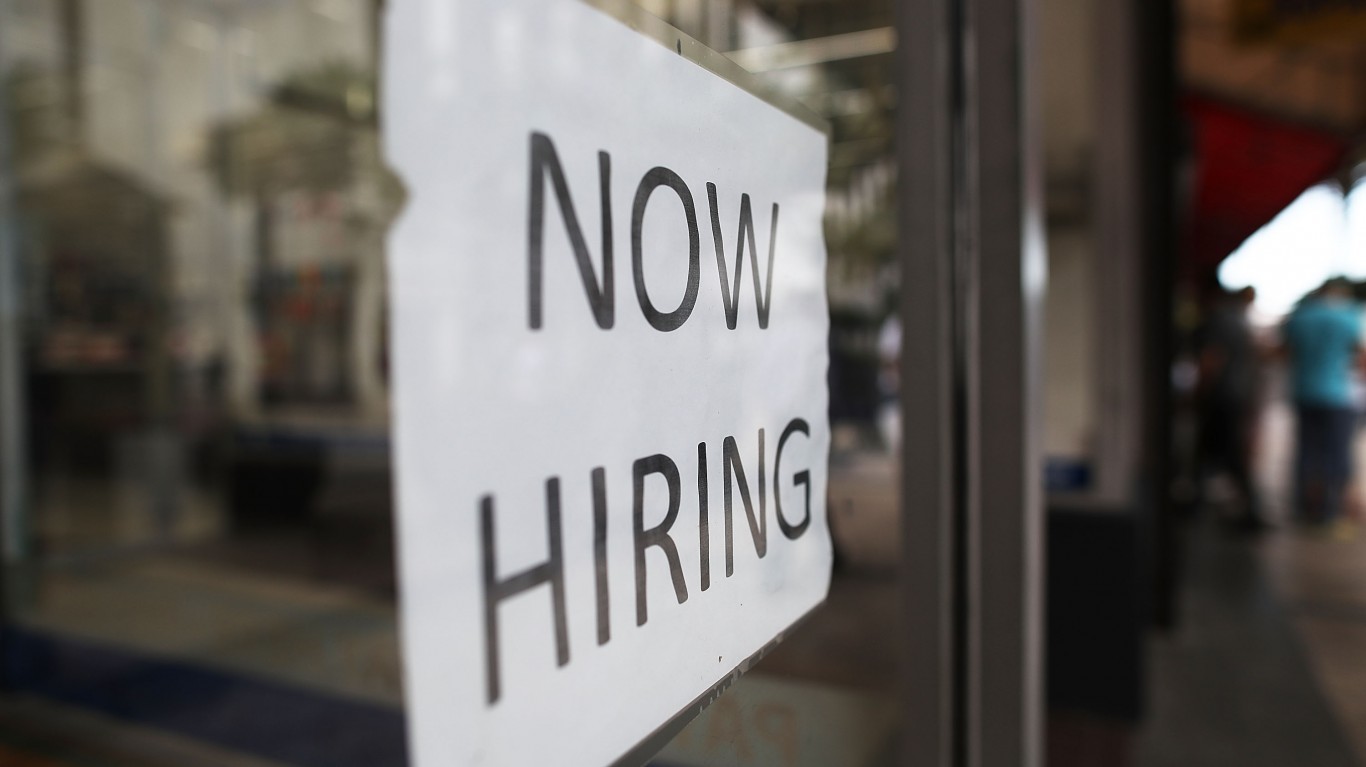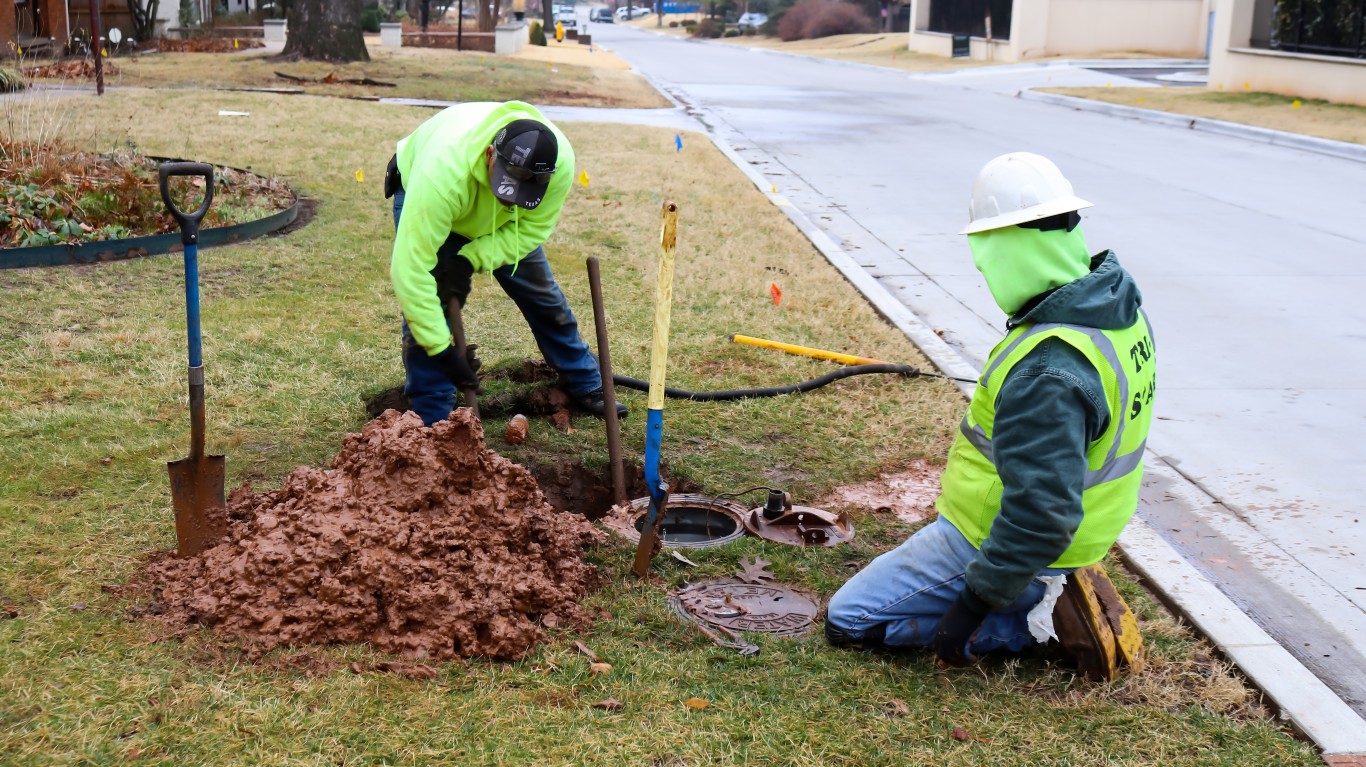Special Report
The State Where the Most People Are Quitting Their Jobs

Published:

The Bureau of Labor Statistics recently released the August State Job Openings and Labor Turnover Summary, which tracks job openings, hire rates, layoffs, and what it terms as “quits” — employees who leave voluntarily. The state where the most people are quitting their jobs is Kentucky.
People considered as “quits” leave their jobs on their own accord and not because of layoffs. Quits do not include retirements or transfers to other locations. The BLS reports on both the total number of people who quit by state and as a percentage of total employment in each state.
To find the state where most people are quitting their jobs, 24/7 Wall St. reviewed the BLS report State Job Openings and Labor Turnover Summary for August, the most recent available. We included the quit rate — the number of people quitting during the month as a percent of total employment — for August, the increase in quit rate from July to August, and the change in the number of quits from July to August.
The job market has been different in the past year than almost any year before it. Millions of job openings have gone unfilled. That number has risen into the hundreds of thousands in some larger states, based on population, causing an imbalance that has made it harder for companies to find people that they need to operate. CNBC recently pointed out, “Employers in the U.S. face an interesting challenge ahead – how to fill nearly 10 million job openings with about a million fewer workers than there are positions available.”
The BLS reports that quit rates rose (significantly) in 14 states in August. The quit rate rose by 0.2 percentage points nationwide.
The increase in quit rate was much higher in several states. The highest level was Kentucky, where the rate rose 1.4 percentage points to 4.5%. It was followed by Idaho, where the quit rate increased by 1.1 percentage to 4.1%. Georgia, however, had a higher quit rate in August at 4.2%. (These are the 25 highest paying jobs in America.)
As for the number of quits, the BLS reports that the number rose (significantly) in also 14 states in August. The states with the highest figures were Georgia (35,000), Illinois (32,000), and Kentucky (26,000). The national total increased by 242,000. (These are the 25 cities with the highest paying jobs.)
While there is no uniform reason for high quit rates, one economist offered an opinion. Ben Ayers, a senior economist at Nationwide, commented to the Washington Post on the long-term labor trend: “The downside is there are many workers that won’t come back in. And long term you can’t sustain a labor market that’s as tight as it is right now.”
In addition to the many people who have quit their jobs who might never come back, millions of people have retired permanently, in many cases because of the COVID-19 pandemic. If this is true, the labor imbalance could last a very long time.
Click here to see the state where the most people are quitting their jobs

15. Texas
> Increase in quit rate Aug/July: 0.2 ppt
> Pct. quits August: 3.0%
> Change in number of quits Aug/July: 19,000 (not significant)
[in-text-ad]

14. Massachusetts
> Increase in quit rate Aug/July: 0.3 ppt (not significant)
> Pct. quits August: 2.5%
> Change in number of quits Aug/July: 10,000

12. Virginia
> Increase in quit rate Aug/July: 0.4 ppt
> Pct. quits August: 2.9%
> Change in number of quits Aug/July: 14,000

12. Indiana
> Increase in quit rate Aug/July: 0.4 ppt
> Pct. quits August: 3.6%
> Change in number of quits Aug/July: 11,000
[in-text-ad-2]

10. Oregon
> Increase in quit rate Aug/July: 0.5 ppt
> Pct. quits August: 3.1%
> Change in number of quits Aug/July: 9,000

10. New Mexico
> Increase in quit rate Aug/July: 0.5 ppt
> Pct. quits August: 3.2%
> Change in number of quits Aug/July: 4,000
[in-text-ad]

9. Illinois
> Increase in quit rate Aug/July: 0.6 ppt
> Pct. quits August: 3.5%
> Change in number of quits Aug/July: 32,000

8. Wisconsin
> Increase in quit rate Aug/July: 0.7 ppt
> Pct. quits August: 3.4%
> Change in number of quits Aug/July: 20,000

5. Mississippi
> Increase in quit rate Aug/July: 0.8 ppt
> Pct. quits August: 3.4%
> Change in number of quits Aug/July: 9,000
[in-text-ad-2]

5. Tennessee
> Increase in quit rate Aug/July: 0.8 ppt
> Pct. quits August: 3.4%
> Change in number of quits Aug/July: 23,000

5. Georgia
> Increase in quit rate Aug/July: 0.8 ppt
> Pct. quits August: 4.2%
> Change in number of quits Aug/July: 35,000
[in-text-ad]

3. South Dakota
> Increase in quit rate Aug/July: 0.9 ppt
> Pct. quits August: 3.4%
> Change in number of quits Aug/July: 4,000

3. Iowa
> Increase in quit rate Aug/July: 0.9 ppt
> Pct. quits August: 3.6%
> Change in number of quits Aug/July: 14,000

2. Idaho
> Increase in quit rate Aug/July: 1.1 ppt
> Pct. quits August: 4.1%
> Change in number of quits Aug/July: 8,000
[in-text-ad-2]

1. Kentucky
> Increase in quit rate Aug/July: 1.4 ppt
> Pct. quits August: 4.5%
> Change in number of quits Aug/July: 26,000
Choosing the right (or wrong) time to claim Social Security can dramatically change your retirement. So, before making one of the biggest decisions of your financial life, it’s a smart idea to get an extra set of eyes on your complete financial situation.
A financial advisor can help you decide the right Social Security option for you and your family. Finding a qualified financial advisor doesn’t have to be hard. SmartAsset’s free tool matches you with up to three financial advisors who serve your area, and you can interview your advisor matches at no cost to decide which one is right for you.
Click here to match with up to 3 financial pros who would be excited to help you optimize your Social Security outcomes.
Have questions about retirement or personal finance? Email us at [email protected]!
By emailing your questions to 24/7 Wall St., you agree to have them published anonymously on a673b.bigscoots-temp.com.
By submitting your story, you understand and agree that we may use your story, or versions of it, in all media and platforms, including via third parties.
Thank you for reading! Have some feedback for us?
Contact the 24/7 Wall St. editorial team.